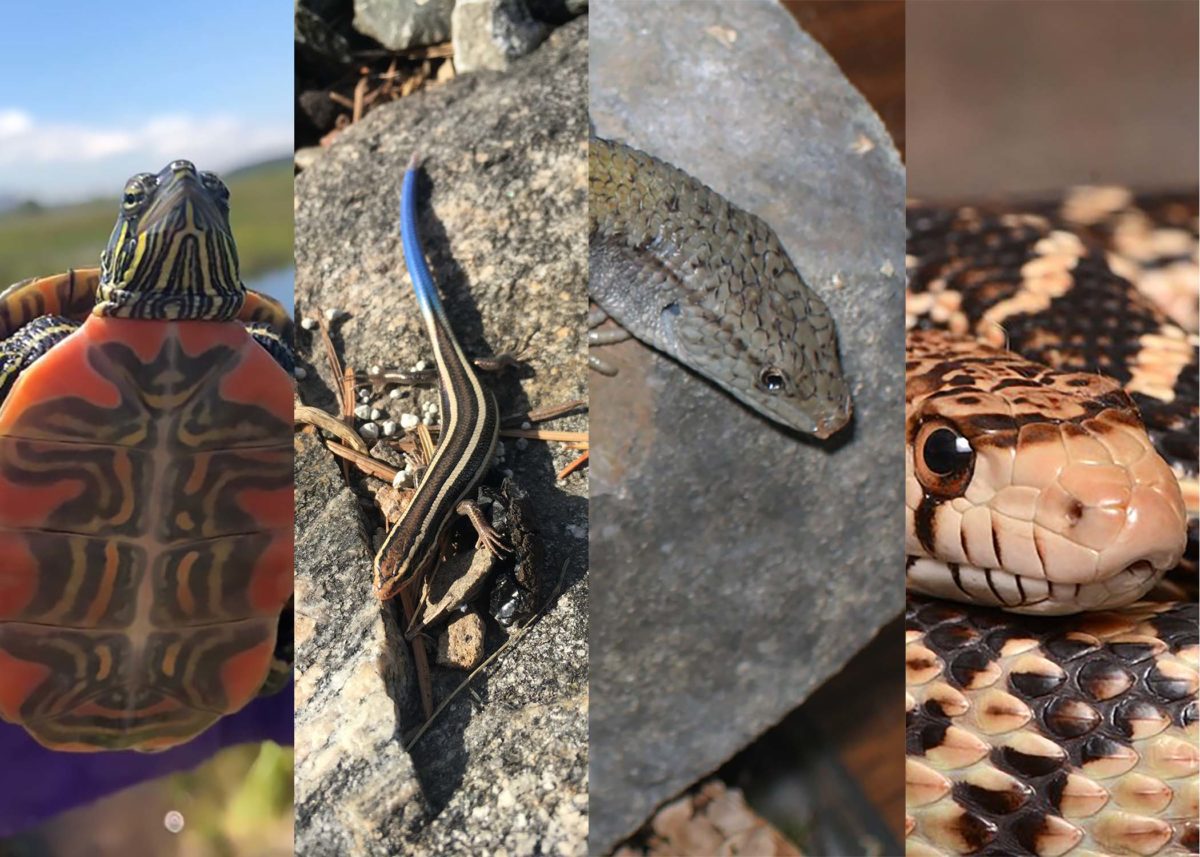
Of the animal species abundant in British Columbia, reptiles are far from the most prominent group. BC has relatively few reptile species but they are here, and their rarity is one of the reasons The Nature Trust works to protect the sensitive ecosystems they call home. Here are four of the reptile species found in this beautiful province.
Western Painted Turtle
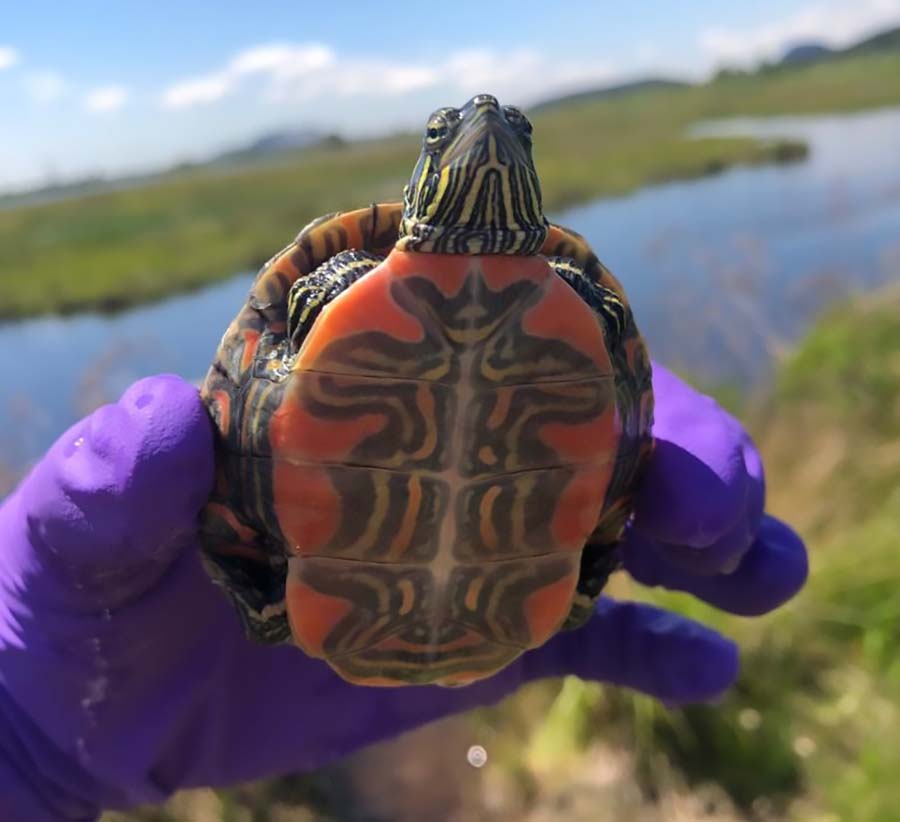
Western Painted Turtle
The Western Painted Turtle is the only species of turtle native to BC, but it is one beautiful reptile. This turtle is known for its red-tinted carapace (upper shell) and red and yellow-streaked plastron (lower shell), as well as a yellow-streaked head.
Despite spending most of their time in water, these turtles lay their eggs on land. Female turtles bury their eggs in patches of sand and grass, typically on gentle, south-facing slopes with good drainage. The warmer south-facing temperatures improve growth and development, while good drainage is necessary to prevent babies from freezing. These nests can be located up to 150 m from water!
Western Painted Turtles can be found across the Southern Prairies and Southern Ontario, as well as the Okanagan and South Coast of BC. They are Blue-Listed in BC (SARA Schedule 1 – Special Concern), indicating that their populations are threatened, often by habitat loss and fragmentation.
Western Skink
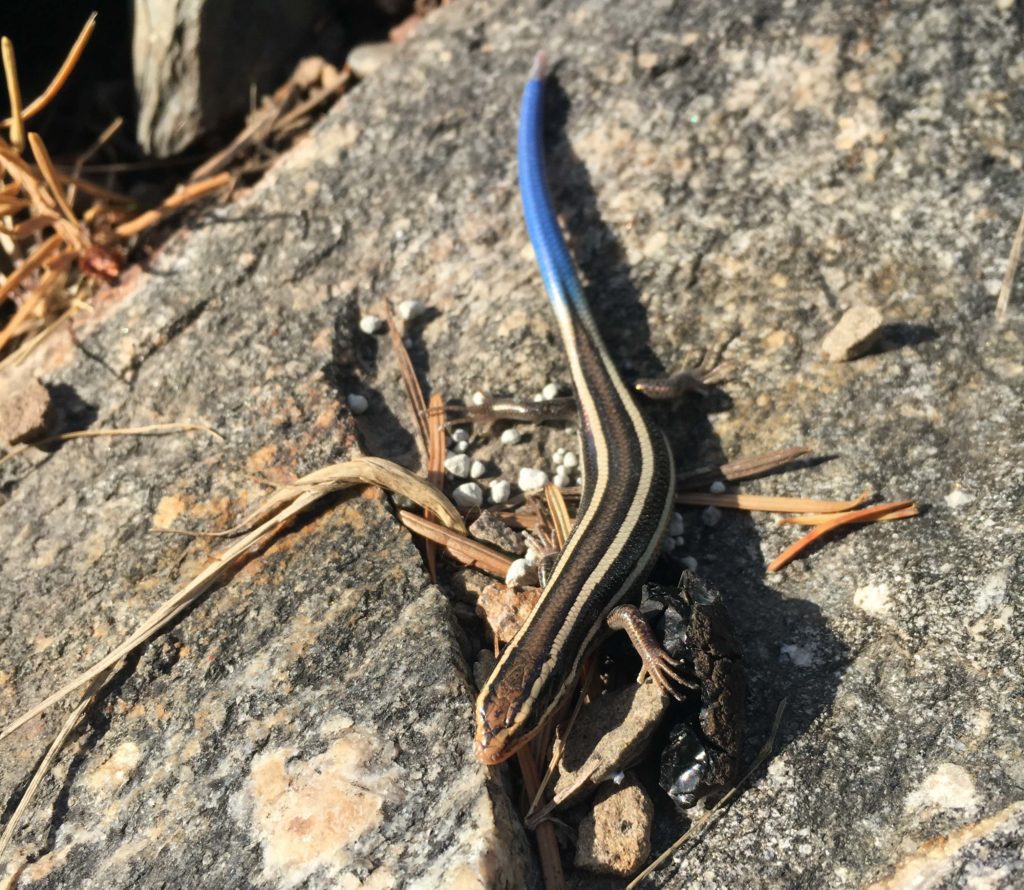
Western Skink
One of the most dazzling lizards in BC, the Western Skink has a glorious, bright blue tail that looks almost fluorescent. The bright tail contrasts with the skink’s body, which is brown, black and grey with four cream-coloured stripes running all the way down.
When this reptile feels threatened, it will try to escape by running and hiding – but, if it is unable to do so, the skink will bite its attacker and detach its tail completely. The severed tail will thrash around on the ground for minutes – distracting the predator with the strange movement of vivid blue.
No need to fret over the lost tail – a new tail regenerates over time and can become even bigger than the original! The tail almost never comes back blue though, which scientists still don’t completely understand. The Western Skink is Blue-Listed in BC (SARA Schedule 1 – Special Concern).
Northern Alligator Lizard
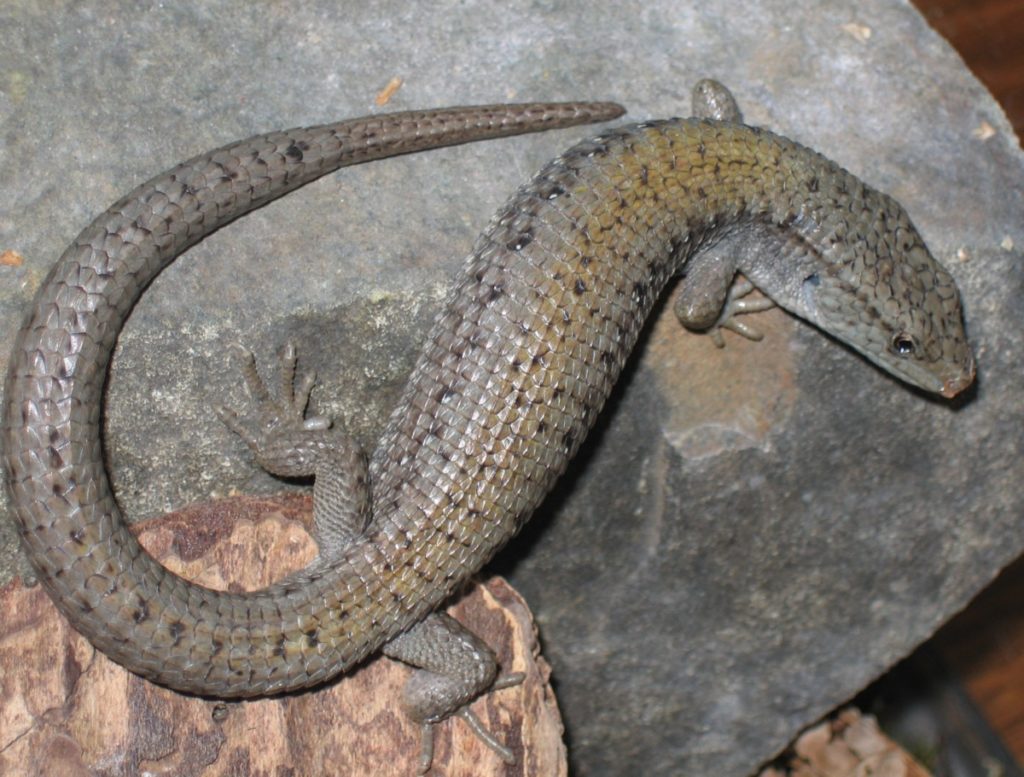
Northern Alligator Lizard. Photo: Meggar
Despite the name, these little lizards are not alligators – those continue to remain in the Southern United States. However, they somewhat resemble alligators, with grey and black scales all along their bodies, although that is where the similarities end. Northern Alligator Lizards grow up to 25 cm long and eat only insects, spiders and snails.
Unlike other reptile species, Northern Alligator Lizards give birth to live young, with one gestation period typically producing 4-5 offspring. They can, however, produce up to 15 babies in one birth. Their young are also born fully developed and independent, meaning that parenting is not a top priority for Alligator Lizards.
These lizards’ BC populations are found primarily along the West Coast in wooded and grassland environments, often spending time under tree bark or rocks. Unlike many other Canadian lizards, their population is Yellow-Listed in BC (SARA Status – Not At Risk).
Great Basin Gophersnake
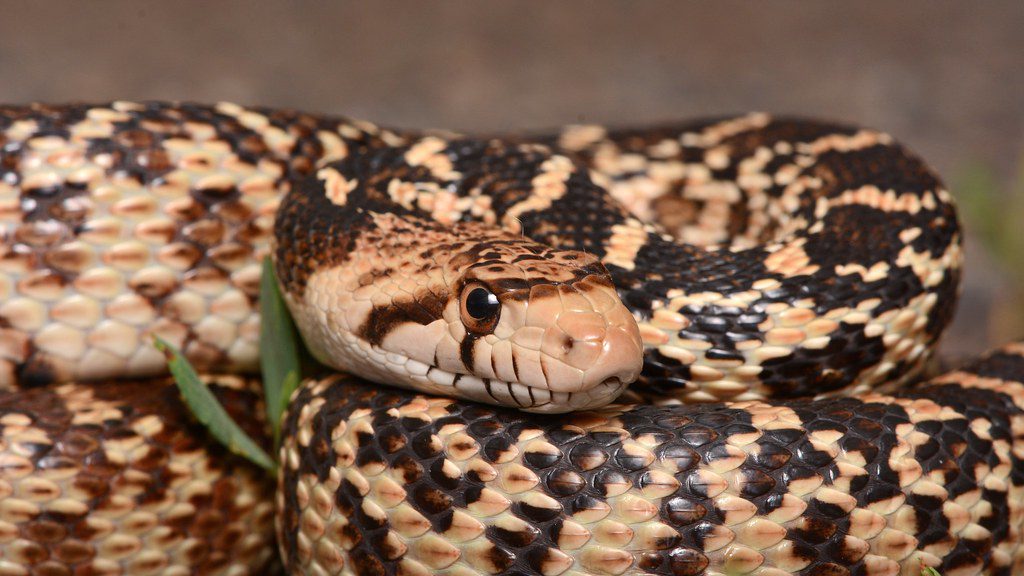
Great Basin Gophersnake. Photo: Andrew DuBois
This snake is the largest serpentine species in BC, growing to up to 2.4 m in length. Found across the Okanagan, it can be identified by its cream-coloured scales chequered with dark brown blotches, as well as dark bands between its eyes and upper jaw that are similar to its cousin, the Western Rattlesnake.
Unlike the Western Rattlesnake however, the Great Basin Gophersnake is not venomous at all. They kill their prey by squeezing the life out of it, and typically only attack small mammals and birds. This does not stop them from playing rattlesnake though, as these clever snakes sometimes produce a display of hisses and tail-shaking in hopes that predators will mistake them for their venomous cousins.
The Great Basin Gophersnake is Blue-Listed in BC (SARA Schedule 1 – Threatened), indicating that its population is threatened, although estimates of its prevalence are uncertain. The species spends most of its time living underground, so scientists are uncertain on how many snakes are left.
